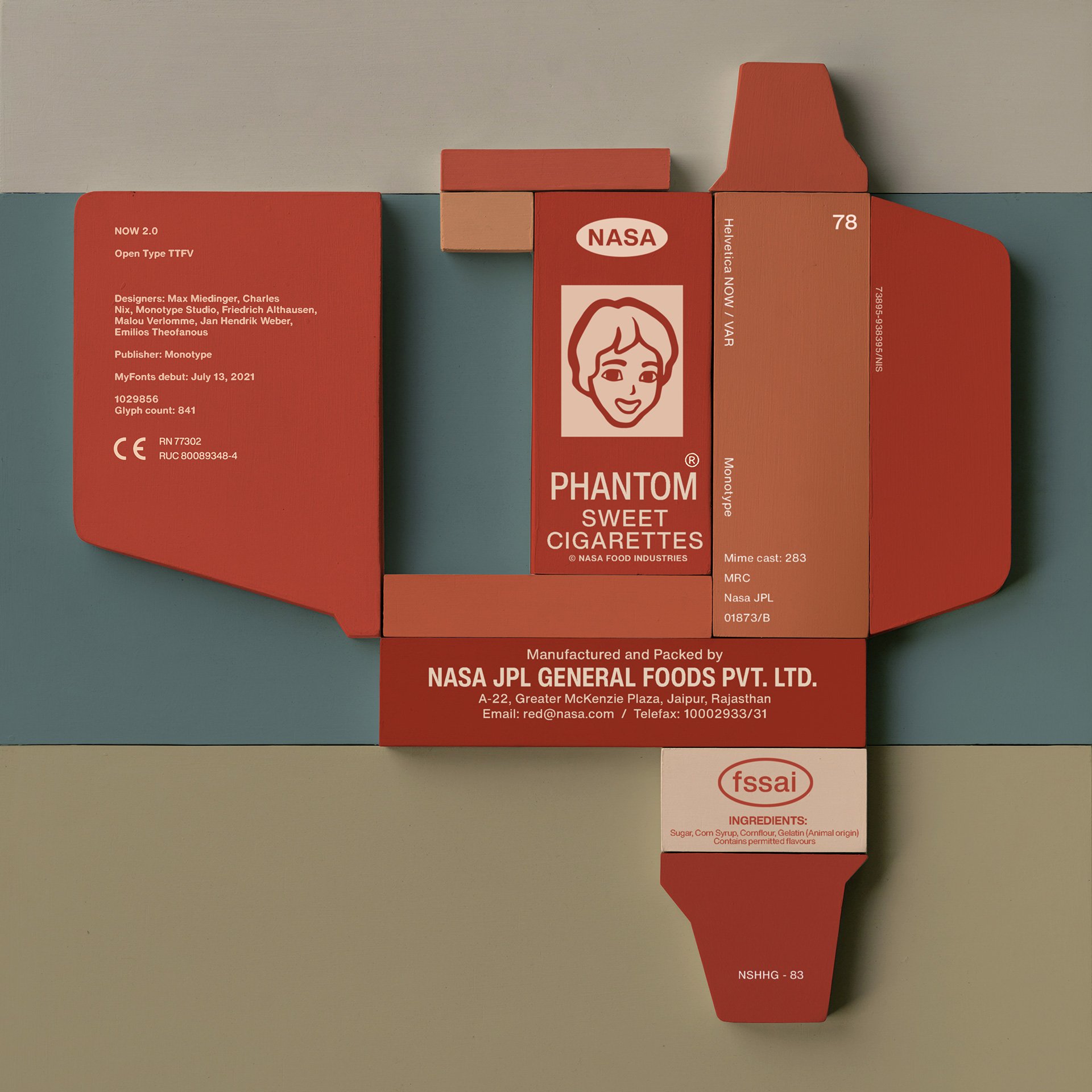'Helvetica the NFT' introduces the iconic typeface to the digital world
Image: Courtesy of Monotype and KnownUnknown
The NFT collection by Monotype and KnownUnknown, Helvetica the NFT brings together artists and designers to reimagine the identity of Helvetica typeface as a digital art.
Over the last 65 years, the iconic sans serif typeface Helvetica has not only survived the many trends and styles, it has mostly been at the forefront of introducing and concluding them. The typeface that was born as 'Neue Haas Grotesk' in 1957 soon became a favourite with marketing, advertising and design industries. Influenced by H. Berthold AG's Akzidenz-Grotesk font, Swiss typeface designers Max Miedinger and Edward Hoffman have designed the new typeface in a neo-grotesque design. Adding to Switzerland’s reputation as an attractive centre for ultra-modern graphic design then, Neue Haas Grotesk soon became an international favourite and was thus renamed Helvetica. Taking forward the long-standing significance of the typeface into the latest realms and digital world, Helvetica is now the driving force for a collection of NFTs. The American type foundry Monotype, in collaboration with KnownUnknown, an emerging web3 creative community, released Helvetica The NFT, a collection of NFTs created by two dozen artists and designers from around the world.
Love in Love by Lance Wyman Image: Courtesy of Monotype and KnownUnknown
While typography and NFTs are a lesser explored combination, Monotype's first-ever digital art collection seems to open new possibilities. Though each design has a different story, concept and style, the presence of Helvetica remains the same. Bringing together artists from various industries such as graphic design, branding, footwear design and photography, the NFTs display an array of diverse creations. While using Helvetica Now Variable, the most digitally-optimised version of the typeface ever made, these renowned artists develop their own definitions.
Kunel Gaur for Helvetica the NFT collection Image: Courtesy of Monotype and KnownUnknown
"Typography drives culture and commerce, and in today’s world, artists’ ability to create new forms of expression and share them with their communities has never been more accessible. This collaboration has produced a never-before-seen collection of art that celebrates the role of Helvetica in a new marketplace. Holders of the tokens will have access to both the creators they admire and a growing community of design enthusiasts who are part of the KnownUnknown ecosystem,” shares Alice Palmer, Senior Vice President of Marketing at Monotype. Due to its low environmental impact, Monotype and KnownUnknown partnered with the Avalanche blockchain to enable the collection.
Ryan McDonagh for Helvetica the NFT Image: Courtesy of Monotype and KnownUnknown
By repeating each letterform, in various weights, Margaret Calvert, typographer and designer who designed the United Kingdom’s road signs, created Helveticadinfinitum to express the idea of Helvetica going on forever. "This technology is a wonderful thing, it allows everyone to have their own little typeface,” shares Calvert. Often described as the “master conjurer of the instantly familiar”, the influential graphic designer and partner at Pentagram, Paula Scher designed Blowing Up #1, a showing of the many weights of Helvetica from the thinnest to the fattest form. Indian artist Kunel Gaur’s Now presents "a homage to the ever-hustling communication landscape on the streets of India” through the art. While questioning and defining the typeface, Toby Tinsley designs '?'. He shares, “I find this symbol the most iconic of the alphabet. It simply questions everything. Without it, how can you ask questions typographically?”
Untitled by Ian Anderson Image: Courtesy of Monotype and KnownUnknown
In a playful loop named 0-9, the author of Letterform Variations, Nigel Cottier celebrates the iconic typeface and its instantly recognisable geometry. Sneaker Revolution by sneaker designer Vicky Vuong expressed the graphics Helvetica in temperature-sensitive and colour-changing leather. “For this collection, I wanted to disconnect from our perception of Helvetica, as a modernist Swiss design. I leaned towards typographical experimentation, random composition, and the study of textures. I wanted to emulate that Letraset effect digitally,” states Hermes Mazali about his H_NOW_VAR creation for the NFT collection. Adding to these creative expressions are graphic designers Kiel Mutschelknaus, Julian Montague, Jasmina Zornic, Phillip Kim, Gurlal Deep Singh, and Chaoqun Wang.
Kunel Gaur for Helvetica the NFT Video: Courtesy of Monotype and KnownUnknown
Adding to the list of creatives is the Type Director of Monotype, Charles Nix. “Helvetica is arguably the most famous typeface of all time. It’s a natural representative of typographic form, but it’s also a very malleable medium. The concept behind the design of the family was to create the clearest, simplest, most neutral typeface ever. As designers, that concept is a dare or a challenge to make something remarkable from something designed to be unremarkable. When you review the complete collection, you can see the variety of visual expression that each artist achieved using the same foundational design,” shares Nix about the art collection and his personal artwork that encompasses meaningful words in a minimal presentation.
0-9 by Nigel Cottier Video: Courtesy of Monotype and KnownUnknown
While every industry is stepping into the digital world, particularly the Metaverse, typography is the latest addition. Along with presenting a lot more variations for a single element, digital art seems to be the tool that can make the statement "everything is possible" a universal truth. As society finds comfort in the unrealistic world of possibilities, art, typography, design and architecture aim to find new niches in this space. Stepping away from the constraints of the physical world, the digital world has limitless opportunities and platforms. While everything moves from the physical to the virtual world, can the art, design and systems followed for years survive this transformation?






